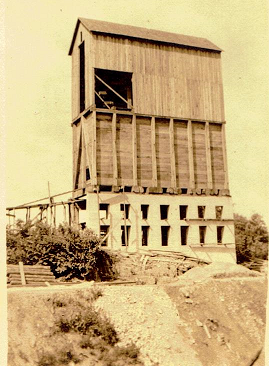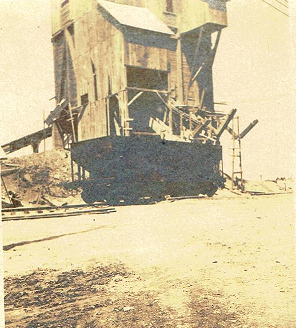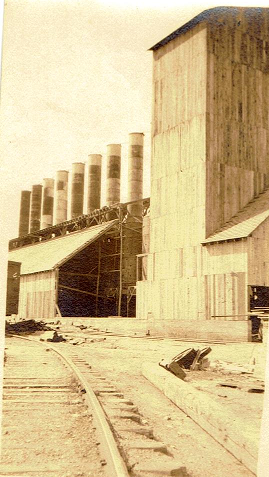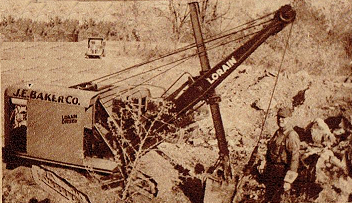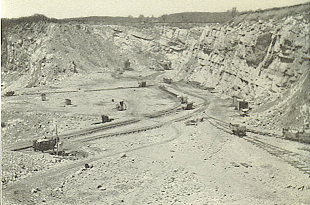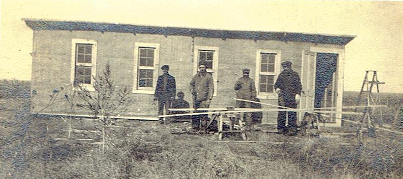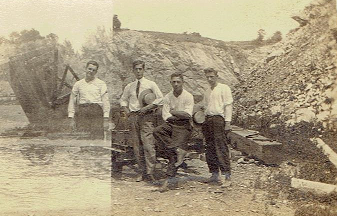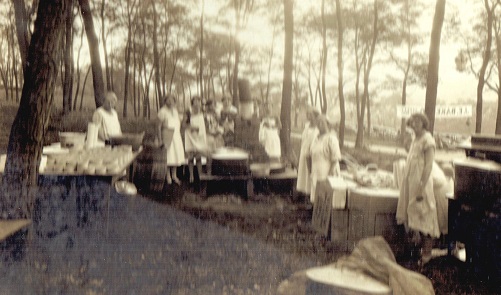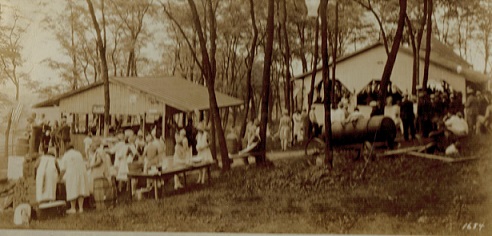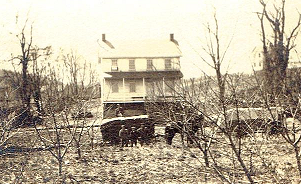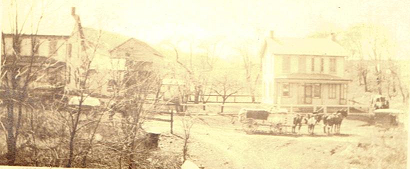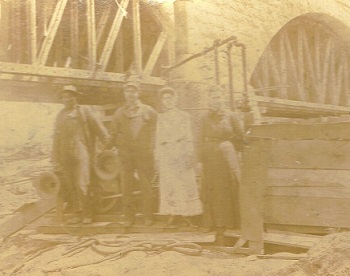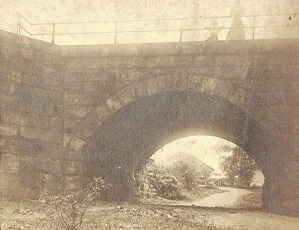

Saginaw History
North Eastern York County History In Preservation NeyChip
"In 1804, Frederick Day, an English Quaker, made a plat of fifty-two lots and disposed of them by lottery. The town he called New Holland, In 1814, he laid out an additional section of 162 lots, which in the printed deeds, was denominated "New Holland continued." This village is on the Susquehanna River, at the mouth of one of the branches of the Conewago Creek familiarly called "The Gut". Some of the first settlers in this locality, in 1734, were Quakers, and for a time, a tract of land was reserved by the Penns for a meeting house. For about thirty years New Holland was known as an important lumber centre... In 1807, Frederick Day built a large stone house which was later owned by Jacob Lichty, until it was removed in 1904. Mr. Licthy conducted the village store from 1863 to 1905. John Hyder kept the first store. New Holland became a post town named Day's Landing in 1833 with Peter Desenberg as postmaster. There were at one time four hotels in the town...In the early part of the century, it was supposed that New Holland was destined to become large, but its lumber interests ceased after the Northern Central Railway was completed in 1851. " History of York County Vol I George Prowell 1907
The area near by was described in the records of the York Water Company as Eib's Landing where the logs were landed and afterward carted to York and bored for the early water mains. Adam Wolf moved his family to the area from the Wolf's Church area and started a tannery business. He purchased Fredrick Day's house, which was later sold to the above mention Jacob Lichty who had married Adam's daughter Mary. History of York County Vol II Biographical 1907 states that "Jacob Lichty, was a merchant of New Holland, York County and assistant postmaster at Saginaw." (The York Displatch January 4, 1895 stated a new postoffice will open in New Holland called Saginaw with Jacob Doll as postmaster. However, a letter from W. W. Howes First Assisstant Postmaster General, dated October 5, 1937, states the post office at Day's Landing was moved to Mount Wolf in 1852. There is no mention of the names of New Holland or Saginaw post offices in that letter. The List of Post Offices in the United States of 1862 only lists Mount Wolf.) ln March 1843, Adam opened a store which paralleled the river. It operated until March 1852, at which time it was sold again to Jacob. At this same time, Adam's sons George H. and William W. moved and opened a store and warehouse near a railroad stop now called Mount Wolf. Adam did not move with his sons.
In September 1903, the Union Stone Company was incorporated by Mr. J. E. Baker and Mr. John T. Dyer. Baker became the soul owner in 1917. The quarry in Saginaw was found to contain a high calcium limestone and also dolomite. Stone used as railroad ballast was furnished by the Union Stone Company to the Pennsylvania Railroad continuously from 1903 to 1930. The Union plant operated until 1936 when it was closed. But in 1947, some operations were started under the name of Billmeyer No.2. Click here to see recent pictures of the long abandoned quarry, several small buildings and items around the grounds in Saginaw PA left to riot.
The area near by was described in the records of the York Water Company as Eib's Landing where the logs were landed and afterward carted to York and bored for the early water mains. Adam Wolf moved his family to the area from the Wolf's Church area and started a tannery business. He purchased Fredrick Day's house, which was later sold to the above mention Jacob Lichty who had married Adam's daughter Mary. History of York County Vol II Biographical 1907 states that "Jacob Lichty, was a merchant of New Holland, York County and assistant postmaster at Saginaw." (The York Displatch January 4, 1895 stated a new postoffice will open in New Holland called Saginaw with Jacob Doll as postmaster. However, a letter from W. W. Howes First Assisstant Postmaster General, dated October 5, 1937, states the post office at Day's Landing was moved to Mount Wolf in 1852. There is no mention of the names of New Holland or Saginaw post offices in that letter. The List of Post Offices in the United States of 1862 only lists Mount Wolf.) ln March 1843, Adam opened a store which paralleled the river. It operated until March 1852, at which time it was sold again to Jacob. At this same time, Adam's sons George H. and William W. moved and opened a store and warehouse near a railroad stop now called Mount Wolf. Adam did not move with his sons.
In September 1903, the Union Stone Company was incorporated by Mr. J. E. Baker and Mr. John T. Dyer. Baker became the soul owner in 1917. The quarry in Saginaw was found to contain a high calcium limestone and also dolomite. Stone used as railroad ballast was furnished by the Union Stone Company to the Pennsylvania Railroad continuously from 1903 to 1930. The Union plant operated until 1936 when it was closed. But in 1947, some operations were started under the name of Billmeyer No.2. Click here to see recent pictures of the long abandoned quarry, several small buildings and items around the grounds in Saginaw PA left to riot.
“Conoy Store Company, owned by Baker, donated a plot of ground in the central section of the town for church purposes. This was in 1926, during the pastorship of the Rev George Heiss, Mr. J. E. Baker furnished the stone and concrere for the building, along with ornamental glass windows. In addition, he contributed toward the interior furnishings and decorations. The men of the Union Baker Plant erected the building and the women assisted by carrying in lumber and lime. This work was done in the evenings after working hours, and many in the community helped out. The cornerstone was laid in August 22, 1926 and the Church was dedicated in that following May….For one entire week before the dedication, Mr. John E. Baker himself and Miss Hipple, who was later to marry him, and devoted Fred Hoffmeyer spent all their time carefully inspecting every single detail to make sure the Church would be in complete readiness for the dedication service.” The History of the J. E. Baker Company 1964 William H Baker
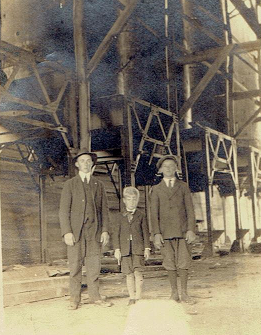
Mr. J. E. Baker bought 570 acres of Wogan Farms in the area. He used the farms to raise potatoes to sell in his Conoy Company Stores which provided low cost food and goods for his employees and the community. One of these stores was in Saginaw from 1917 to 1934.
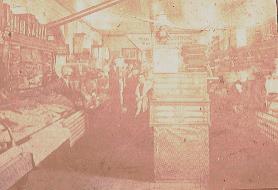
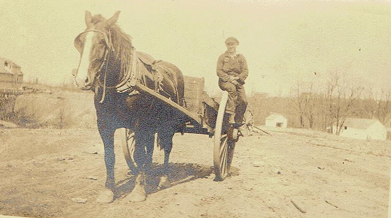
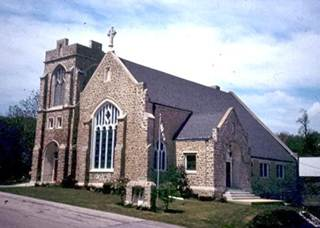
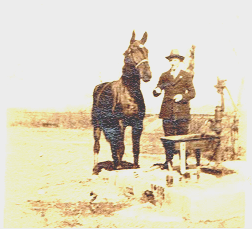

Gut Road train bridge finished 1904
Watering hole in Saginaw
Coming up from Gut Road
Pictures provided
by Harold Lowe.
by Harold Lowe.
New Holland Ball Team
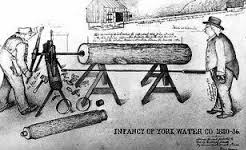
Union Stone Quarry
I would like to thank NEYCHIP for featuring my videos on the Union Stone Quarry. I am honored to be included
by an organization that I learned so much on over the years. B Mills
"Running Into History"
by an organization that I learned so much on over the years. B Mills
"Running Into History"
NeyChip would love
to hear from you.
NeyChip@gmail.com
to hear from you.
NeyChip@gmail.com
